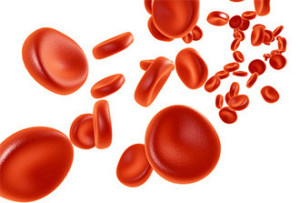What is Platelet Rich Plasma (PRP) and why is it good for us? To put it simply it is plasma that is rich with platelets.
So what is plasma and why do we need it?
Plasma is one of the four main components that make up human blood along with red blood cells, white blood cells and platelets. Plasma makes up 55% of our blood and is the liquid portion made up of 90% water, 6-8% proteins, 2-4% salts, lipids and glucose.
Plasma is responsible for transporting gases like oxygen, carbon dioxide, and nitrogen; nutrients like glucose and amino acids, hormones; proteins; lipids; ions such as sodium, chloride, and calcium; and various waste products.
Plasma also performs a number of other functions including working with platelets to form scabs. Platelets are small discoid cells with a life span of about 7-10 days and are very important, as they contribute to forming blood clots.
With abundant platelets in our own bodies the concept of PRP treatment is quite ingenious. PRP is a rich source of many different kinds of growth factors and cytokines, which activate the healing of soft tissue and bone.
The efficiency of growth factors for healing injuries and rejuvenation of the body increases as the concentrations of platelets increase. The platelets inside the PRP can even be activated by the inclusion of calcium chloride, and thrombin.
PRP was first used in 1987 in an open-heart surgery. The safety and effectiveness have been well established and since 2006, PRP has been introduced and trusted for facial rejuvenation in Europe, Japan and Australia.
In cosmetic procedures, producing PRP from your blood can be used to clog up tears and cuts. In addition, the growth factors from the platelets can stimulate the production of collagen, during the injection into the skin.
Preparation of PRP
Approved by the Food and Drug Administration (FDA), there are two ways to prepare PRP. Both processes involve collecting whole blood. After collection, the blood is centrifuged to separate the PRP from red blood cells and platelet-poor plasma.
The typical human baseline platelet count is about 200,000 per µL, while that in the PRP is more than five-fold.
Applications of PRP in Medical & Cosmetic Purposes
As mentioned above, PRP is widely used in medical and cosmetic procedures. It is an important tool for medical treatments, like nerve injury, osteoarthritis, tendinitis, cardiac muscle injury, regeneration, bone repair, oral surgery and plastic surgery.
In cosmetic procedures, PRP is commonly used to stimulate the production of collagen, during the injection into the skin.
Before the facial rejuvenation with PRP, a clinician will evaluate and assess the degree of skin ageing and a skin analysis may also be done. After evaluation, a physician will consult with the patient about the reasonable outcome that can be expected from the treatment. Sometimes, the clinician will take a pre-treatment photo for comparison after the treatment.
Before the treatment, the skin is cleansed, anaesthetic cream applied and blood is collected from the arm, which is placed into the test tube for centrifugation.
After preparation and activation, the PRP is then injected into obvious wrinkles and lines. The remaining PRP can and usually is injected into other skin areas.
Dermal roller treatment may be applied to facilitate the movement of PRP into the skin. A collagen mask may also be used to protect the skin, aid in its recovery and introduce more PRP into skin.
PRP can be a once only treatment or in a series of 3 consecutive treatments depending on the condition of the skin. If lines or wrinkles are still highly visible, further injections may be applied in 4-6 week intervals.
Risks and Complications
PRP is considered to be safe for the patient. PRP uses your own blood so there should be little to no complications at all. The only complications may be minimal swelling, redness or bruising with 24 hours. Since the complications are minor and temporary, after 24 hours, the patient will have recovered. At the needle site, a bruise might be anticipated for 2 – 3 days. PRP will help to improve and repair the skin tissue, and has been proven to do so with visible results.
Q: Which body and facial area can be treated?
A:Several body and facial areas can be treated, such as around the eyes, forehead, cheeks, neck, jawline, chest, back of arms and hands. However, before the treatments, you must consult a physician to determine your suitability.
Q: How long will treatment take?
A: The treatment takes 45-60 minutes to complete.
Q: How many treatments are recommended?
A: Normally, it is recommended to have at most three treatments at any one time, with intervals of 4-6 weeks.
Q: What I can anticipate after the PRP treatments?
A: Skin tone and texture will show improvement within a few weeks. After three months, collagen should be fully regenerated.
Q: Is PRP treatment suitable for any skin type?
A: Yes, all skin colours and types are suitable for PRP treatments.
Q: Can I expect any discomfort after the treatments?
A: The response of intra-dermal injections can vary for each person. However, adverse patient complications are rare. Physicians might use topical anaesthesia before the treatments. You may have redness, bruising, or slight swelling after the procedure, however these symptoms will disappear fairly quickly.
Q: Is there any time I can’t have PRP treatments?
A: Normally, if you are taking certain medications, such as blood thinning medication, having long-term steroidal therapy, pregnant or breastfeeding, or have cancer, it is not recommended to have PRP treatments. However, please provide full details of your medical history to your physician. They will provide you with a professional review and consider if you are suitable to have PRP treatments.

